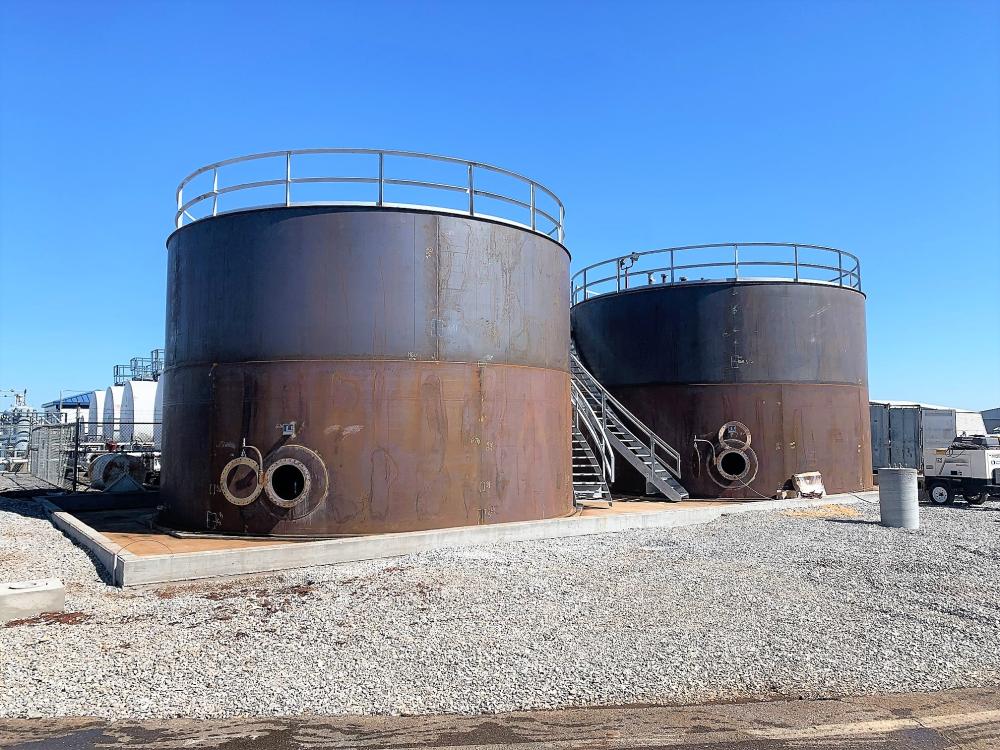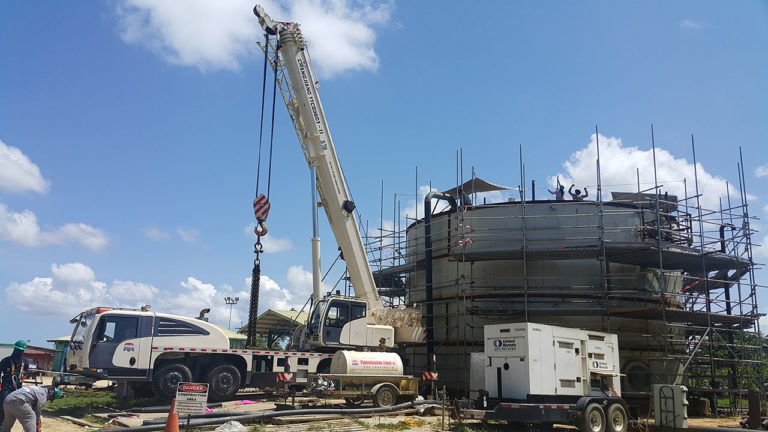API 650 Welding Inspection and Its Impact on Operational Performance
Wiki Article
A Step-by-Step Check Out the Installment Refine of Welding Examination Techniques
Welding assessment is a crucial procedure that ensures structural integrity and safety. The setup of evaluation strategies entails numerous systematic steps, each indispensable to attaining dependable outcomes. From planning and tool choice to carrying out aesthetic and non-destructive tests, each stage demands careful focus. Understanding these treatments can greatly enhance quality control in welding projects. What challenges arise in executing these techniques, and how can they be properly addressed?Recognizing the Significance of Welding Evaluation
Welding inspection is an important element of making sure architectural honesty and safety and security in construction and production processes. This method includes evaluating welded joints for flaws, guaranteeing that they meet specific requirements and laws. By methodically gauging weld top quality, assessors can identify problems such as splits, voids, and incomplete blend, which can compromise the strength and sturdiness of structures.The importance of welding inspection extends past instant safety and security concerns; it aids prevent pricey failings and prospective risks in the long-term. Effective inspection methods foster conformity with industry standards, consequently improving the overall reliability of bonded components. In addition, a robust assessment process contributes to keeping the online reputation of manufacturers and contractors, as it ensures clients of the quality of their tasks. Ultimately, recognizing the importance of welding assessment is important for promoting risk-free building and construction methods and making sure the durability of necessary framework and products.
Choosing the Right Devices for Inspection
When picking the appropriate devices for evaluation, it is important to contemplate the specific needs of the welding procedure and the products involved. Various inspection approaches, such as aesthetic, ultrasonic, and radiographic screening, necessitate distinctive tools customized to their special needs. For aesthetic inspections, devices like multiplying glasses and calipers are important for evaluating weld high quality. Ultrasonic screening requires customized devices efficient in sending and receiving acoustic waves to spot inner problems. Radiographic testing, on the various other hand, utilizes X-ray or gamma-ray sources together with sensitive film or digital detectors to disclose disparities.
Additionally, personal safety tools (PPE) is important to assure the safety of assessors during evaluations. Choosing the right tools not only improves the accuracy of inspections but additionally adds to the total honesty and safety and security of the welding project. Subsequently, a thorough understanding of available tools and their applications is critical for efficient welding evaluation.
Getting ready for the Evaluation Process
Before starting the evaluation procedure, it is crucial to develop a complete plan that describes the extent and objectives of the examination. This strategy needs to consist of particular requirements that specify what makes up appropriate quality in the welding work being checked. Identifying the relevant codes and requirements is important, as they will lead the examination standards and approaches.In addition, personnel associated with the examination should be effectively trained and licensed in welding assessment methods to ensure integrity and precision. A checklist can be useful in organizing the numerous elements of the examination, varying from equipment readiness to ecological conditions that can influence the analysis.

Logistical considerations such as organizing, offered resources, and communication in between group participants should be dealt with. By preparing systematically, inspectors can improve the efficiency of the examination and make certain that all critical aspects are properly taken into consideration prior to continuing with the examination itself.
Performing Visual Evaluations

Carrying out visual inspections is an important step in the welding assessment process, calling for cautious preparation to assure efficient evaluation. Assessors should know with key flaw indicators that can signify prospective concerns in weld high quality. By concentrating on these elements, one can enhance the general reliability of the assessment outcomes.
Planning For Visual Evaluation
Aesthetic evaluation functions as a vital first action in the welding inspection process, assuring that any prospective defects are determined early (API 650 Welding Inspection). Correct prep work is important for reliable visual inspection. Assessors must start by assessing appropriate documentation, consisting of welding treatments and specifications, to comprehend the job demands. They have to gather needed devices, such as magnifying glasses, flashlights, and proper individual safety tools (PPE) A complete examination of the evaluation area is crucial; examiners must validate it is totally free and clean of obstructions. Additionally, it is essential to develop excellent lights problems to enhance visibility of welds. By taking these preparatory steps, inspectors can create an environment for recognizing discrepancies and assuring the honesty of the bonded structuresKey Defect Indicators
A detailed understanding of crucial problem indications is necessary throughout visual evaluations to assure the top quality and security of welded joints. Assessors must concentrate on certain indicators such as cracks, porosity, undercuts, and insufficient fusion. Fractures might show up as sharp lines and can jeopardize structural stability. Porosity manifests as small openings that can damage weld strength. Undercuts, which are grooves along the weld edge, can bring about tension focus. Incomplete fusion suggests that the weld metal did not effectively bond with the base material, resulting in a weak joint. By systematically identifying these flaws, examiners can identify conformity with sector requirements and enhance the total dependability of welded structures, ultimately adding to much safer operational problems.Implementing Non-Destructive Evaluating Strategies

Various non-destructive testing (NDT) techniques are integral to assuring the honesty of welded structures without compromising their functionality. These techniques enable inspectors to assess weld high quality and find defects without creating damages to the materials being evaluated. Typical NDT techniques include ultrasonic testing, radiographic testing, magnetic fragment screening, and color penetrant testing. Each technique serves a particular function, dealing with various kinds of flaws such as cracks, porosity, or insufficient combination.
Implementing NDT strategies needs a systematic approach, starting with picking the suitable approach based on the materials and the nature of the weld. Educating employees in these methods is crucial for precise results. Additionally, developing clear procedures and standards guarantees consistency throughout the inspection procedure. By incorporating NDT into the welding evaluation workflow, organizations can improve the integrity of their products while Read More Here minimizing potential risks related to structural failures. This positive technique eventually adds to maintaining safety and security and high quality standards in bonded buildings.
Examining and recording Inspection Outcomes
Efficient documentation and evaluation of assessment results are essential elements of the welding evaluation procedure. Accurate records of inspection findings serve as a referral for quality control and compliance with industry requirements. API 650 Welding Inspection. Assessors should utilize organized forms or electronic platforms to log details such as the kind of weld, inspection techniques utilized, and any kind of inconsistencies identified throughout the analysisComprehensive analysis is vital when data is collected. This involves comparing outcomes against established requirements to determine trends or recurring concerns. Analytical tools might be utilized to quantify flaws and analyze their impact on overall weld high quality.
Efficient communication of findings to relevant stakeholders is critical. Reports and recaps must be clear and concise, highlighting essential understandings and recommendations for corrective activities. By methodically assessing and Get More Information documenting evaluation outcomes, organizations can promote continuous renovation in welding techniques and enhance product stability.
Regularly Asked Questions
What Credentials Are Needed to End Up Being a Welding Examiner?
To become a welding examiner, one normally requires relevant certifications such as AWS CWI, have a peek at these guys together with experience in welding methods, understanding of welding codes, and effectiveness in assessment techniques to guarantee high quality and safety standards.Exactly How Typically Should Welding Inspections Be Conducted?
Welding assessments ought to be carried out on a regular basis, normally after each weld is finished, and occasionally during projects. Variables such as task complexity, sector criteria, and regulative needs can affect the regularity of these assessments.What Is the Price of Welding Assessment Providers?
The expense of welding assessment services differs considerably based on variables such as project dimension, intricacy, and place. Generally, costs vary from $100 to $150 per hour, with extra charges for specialized screening and accreditations.Exist Certifications for Welding Inspectors?
Yes, there are various certifications for welding inspectors, including those supplied by the American Welding Culture (AWS) and the International Institute of Welding (IIW) These certifications guarantee examiners possess the required abilities and knowledge for effective analyses.
Just how Do I Choose an Assessment Provider?
To pick an assessment provider, one need to evaluate qualifications, experience, industry online reputation, and client testimonials. Additionally, contrasting service offerings and rates can help guarantee the chosen provider meets specific project needs properly.Furthermore, employees included in the evaluation should be sufficiently trained and accredited in welding assessment methods to assure dependability and precision. Performing aesthetic assessments is a crucial action in the welding inspection procedure, needing cautious prep work to ensure effective analysis. Visual assessment offers as an important first step in the welding inspection procedure, guaranteeing that any possible problems are determined early. Reliable documents and analysis of evaluation outcomes are important components of the welding assessment process. Welding inspections ought to be conducted routinely, commonly after each weld is completed, and periodically throughout jobs.
Report this wiki page